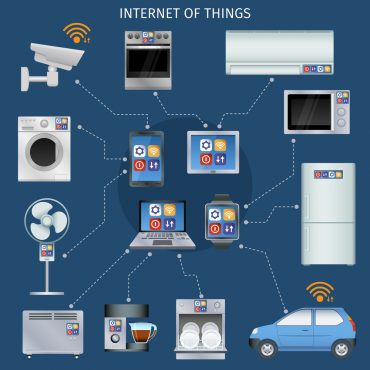
It’s time to take a leap in app building. With the advances in AI, intelligent applications can cater to the ‘intent of individual users
IT application development has come a long way since the start of its journey in the 1960s. If we follow its exciting and mind-boggling evolutionary progress from the inception with mainframes, all the way to client servers and beyond, it is evident that until recently applications behaved much same way in the hands of all its users.
Customization was limited to access controls and user data. It is only when web apps made their entry on the scene that personalization truly kicked in. This marked a time of revolutionary change. Enterprises started building apps that morphed to deliver the most relevant content to the “segment” to which a user belonged (“millennial Insurers,” for example).
After the web, mobile apps shaped the evolution of personalization. Apps morphed to provide different user experiences to various segments like millennials, digital-natives and baby-boomers. It was still a far cry from the semi-living digital organism apps of today, and the industry encountered initial problems like “App Hangover” and “Features Overload.”
App hangover was a direct result of enterprises churning out more and more apps in response to the mobile landscape’s demand for nimble services. In many cases, the inability to design further personalization drove enterprises to squeeze more and more features into mobile or web apps, resulting in features overload. Most enterprises faced both problems, and both signaled bad news: bad user experiences for consumers, and loss of productivity for enterprises.
[ Related: How a Walmart App Speeds Inventory Control ]
Let’s take an example of underwriters. Underwriters need to collect large quantities of data and undergo many decision-making processes to assess the risks of insured assets. Since the activity is dogged by low productivity, the traditional approach has been to adopt single, mostly off-the-shelf apps for each underwriting activity.
While this approach delivers app consolidation, it does not solve the productivity problem. In fact, it leads to the creation of monoliths, and underwriters still deal with suboptimal navigation, and interfaces that are not personalized to their specific needs. In addition, insurers lose their crucial ability to create brand differentiation.
Take intelligent applications leap with AI
The time has come to take a leap in app building. With the advances in artificial intelligence (AI), today enterprises can “compose” apps to cater to the “intent” of individual users. Serving to intent will significantly boost the productivity of users. Unlike traditional (or advanced) personalization, intents are dynamic and established through various machine-learning algorithms. While personalization is synonymous to segments (N=x), intent relates to individuals (N=1).
This approach also enables the capability to embed more features into apps without compromising end-user experience. The underlying principle at work is “next best action,” determined by “implicit” and “explicit” intent. So, while AI solves the existing problem of simplifying apps, it also delivers app consolidation.
For any enterprise struggling with “Feature Overload” this means that it can move away from designing never-ending apps portfolios and focus on fewer “next best action” apps. Another advantage of letting machines “compose” apps is that it can assemble features across domains and let users complete tasks at one place, which would otherwise have required multiple apps.
Understanding Intent
Back to intent, it can be established through multiple inputs, normally categorized into two major components, implicit and explicit. Explicit intent is established through attributes provided directly by users. Continuing with our earlier example, an underwriter clicking the “fire” button on her app, signifies an explicit intent to assess fire risk of the property.
[ Related: How a Real-Time Delivery App Was Built in a Month ]
The underwriting app will ensure that all fire-related components show up on her interface. Now suppose machine-learning algorithms have learnt that she always looks up certain details related to fire assessments, this comprises implicit intent, which is established by the machine. Once the machine establishes her intent, it can intelligently compose a set of screens pertaining to fire assessments, dramatically improving her productivity.
Implicit intent can also be established via “ambient knowledge,” based on environmental factors like the user’s device, location and time of the day. Ambient knowledge allows intelligent apps to determine features that can be activated for specific users. An example of this is a claims adjudicator using augmented reality (AR) to record and analyze the environment in real-time while working in the field. In an instance where there is a damaged car, merely pointing a camera at a car enables the AR app to take a virtual snapshot of the car and provide vital information regarding the extent of the damage, and remediation suggestions. This not only creates an awesome user experience, it also helps the insurance company process claims faster, thereby improving productivity and efficiency.
These examples give us a fair idea of the potential effectiveness of machine learning within app composition. It improves productivity. More importantly, it saves enterprises tons of money by building optimized components for on-demand composition, and obliterating the need to build single-purpose apps.





























